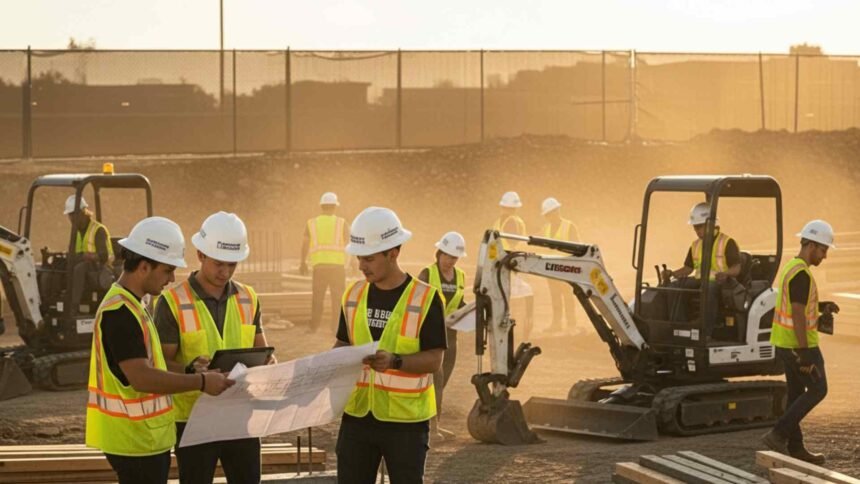In recent years, a remarkable shift has emerged: more and more young people and recent graduates are exploring careers in construction and skilled trades. Far from being a fallback option, these paths are gaining serious momentum, and for good reason.
Stability in an Uncertain Job Market
This surge is, in part, a reaction to widening uncertainty in white-collar fields. Many Gen Z individuals are growing wary of entering roles in tech or office environments, where automation and artificial intelligence increasingly threaten traditional entry-level positions.
In contrast, careers in pipefitting, welding, HVAC, and electrical work remain resilient to automation, at least for now, and offer real job security. Entry-level construction roles start at roughly $19 an hour and can climb to $45 or more as professionals gain experience, making the industry financially attractive from day one.
A Growing Trend: Graduates in Construction
It’s not just high school graduates exploring skilled trades. The fastest-growing sector for recent college graduates is now construction, followed closely by utilities and oil, gas, and mining. This uptick reflects broader trends: infrastructure projects, supported in part by incentives like clean energy tax credits, are spurring demand for skilled labor and offering new opportunities even for degree holders.
Social Media and the “Toolbelt Generation” Effect
These career shifts are amplified by powerful storytelling on social platforms. Influencers in skilled trades, electricians, plumbers, and carpenters are gaining large followings by sharing real, often gritty glimpses into their day-to-day lives. In the UK, the movement dubbed “Generation Toolbelt” is booming. Hashtags like bricktok (with nearly 8 billion views) showcase the appeal of skilled, hands-on work. Influencers such as Kimmythesparks highlight how rewarding and flexible these jobs can be, and many are bypassing university entirely.
Enrollment Growth and Parental Support
Evidence of this shift is hard to miss. In the UK, there’s been a 45 percent rise in the number of young people seeking information about construction careers, with one in three visitors under eighteen. On a broader scale, research shows that in the UK, around 1.4 million young people, around 20 percent of 16- to 24-year-olds, now consider a construction career, up from two years ago. Even parental attitudes are evolving: 66 percent now encourage their children to pursue apprenticeships, compared to just 29 percent in 2023.
Tech, Training, and Apprenticeships Modernize the Field
The modern construction industry isn’t just about bricks and mortar. Educational institutions and employers are incorporating technologies such as drones, virtual and augmented reality, digital twins, BIM (building information modeling), and more, making the sector far more appealing for young, tech-inclined individuals. Apprenticeships and internships have become especially popular, offering paid learning, hands-on training, and clear paths into rewarding careers.
Employers are also ramping up outreach: in one year, construction companies increased outreach to students on the Handshake platform by 46 percent. Applications to roles like architecture, drafting, and construction management jumped more than 40 percent, well above the average growth across other sectors.
Demand Meets Demographics: A Workforce at Risk
Labour shortages are no small issue. Currently, many regions face aging construction populations, with significant portions nearing retirement. In the US, for instance, over 25 percent of construction workers are nearing retirement, while in 2023, construction employment reached a historic high of 8 million. Yet, the Bureau of Labor Statistics projects that over the next decade, the industry could add another 380,000 jobs, outpacing overall job growth.
Combined, these forces explain why construction is suddenly a compelling option for graduates:
- Fast financial return: Earn immediately, avoid debt, advance quickly.
- Diverse roles: From trade crafts to project management, design, and digital integration.
- Tech-led innovation: Modern tools and digital workflows offer engaging and dynamic work.
- Changing public perception: Social media and success stories showcase the viability and pride in these roles.
- Urgent workforce needs: The industry requires new talent—and is casting a wide net to fill the gaps.
A Rebalanced Career Perspective
Graduates today are redefining success. The traditional route, an academic degree followed by an office job, no longer holds the same allure it once did. In contrast, careers in construction appeal through authenticity, stability, flexibility, and imaginative potential. Whether through stories on social media or robust apprenticeship pathways, today’s young professionals are finding that building bridges, quite literally, can lead to enduring prosperity.
This shift signals not just a career trend but a broader rethinking: work that is hands-on, tangible, and purposeful is often just as, if not more, fulfilling than anything behind a desk.









